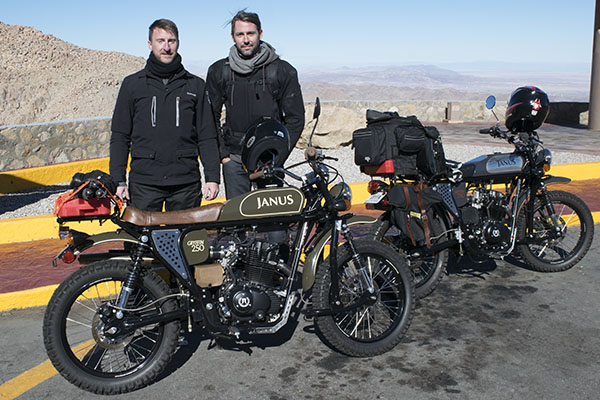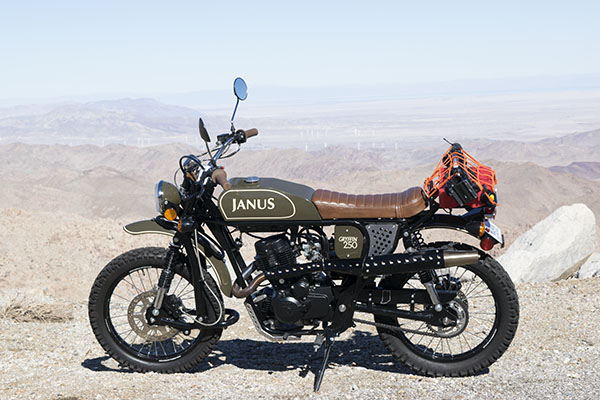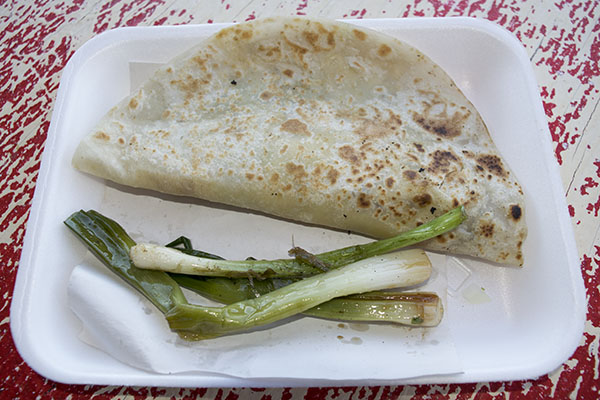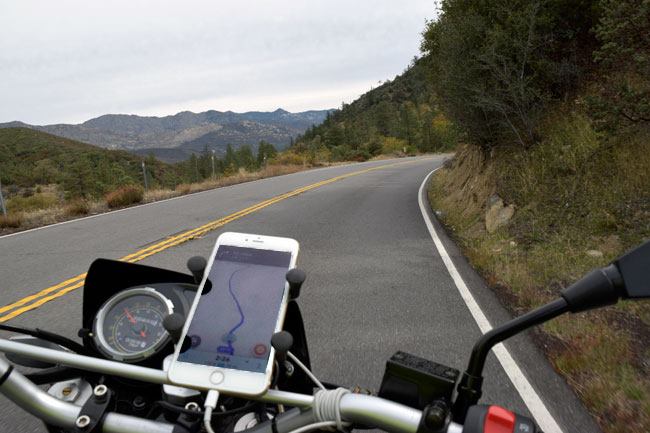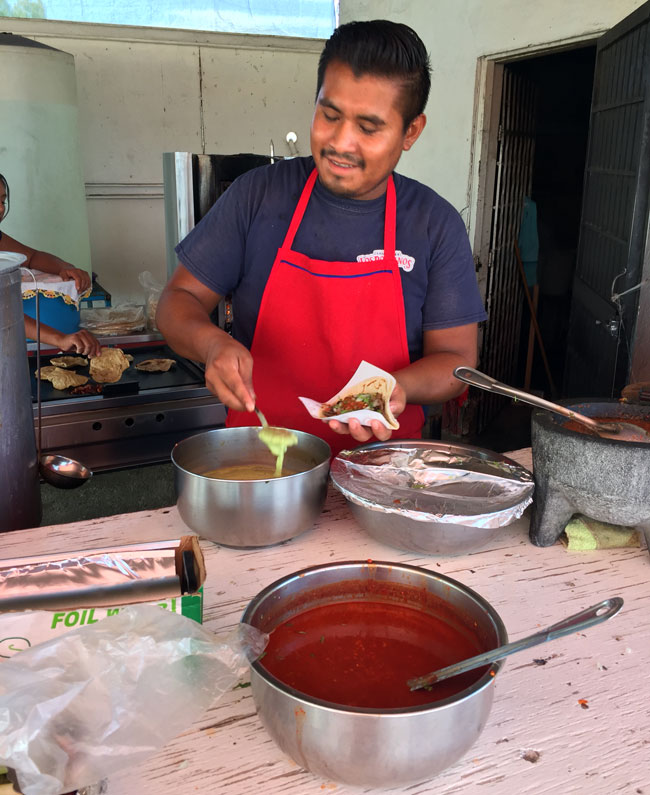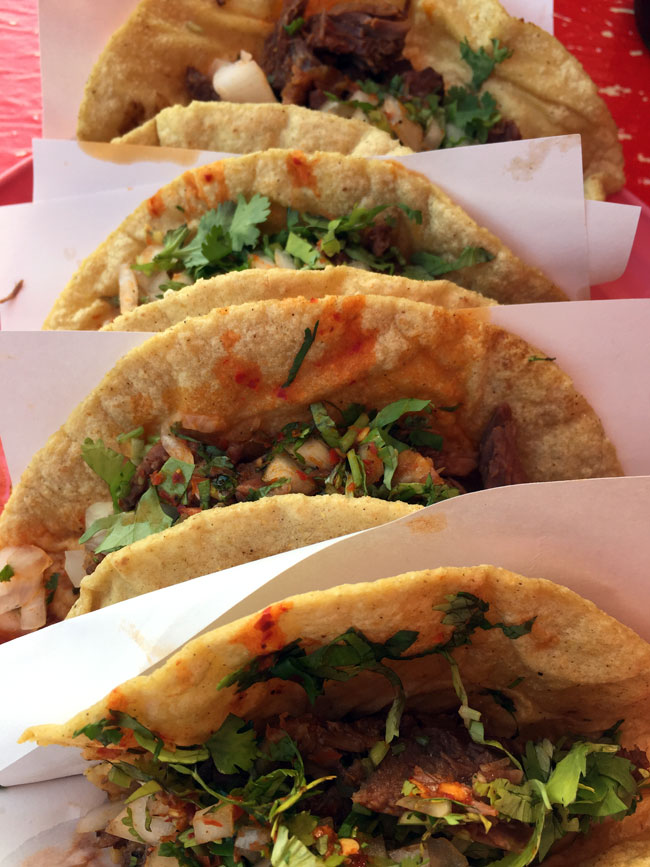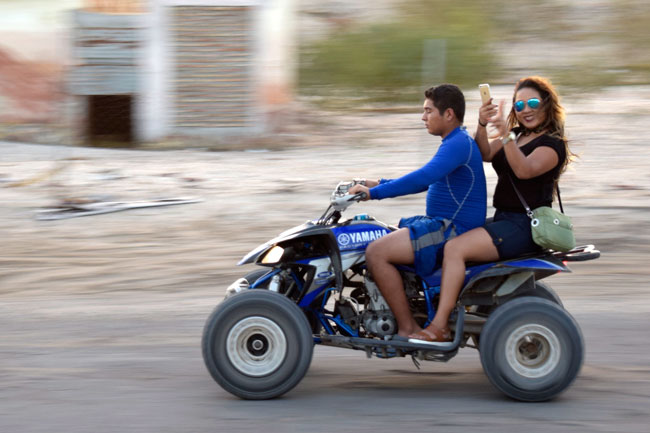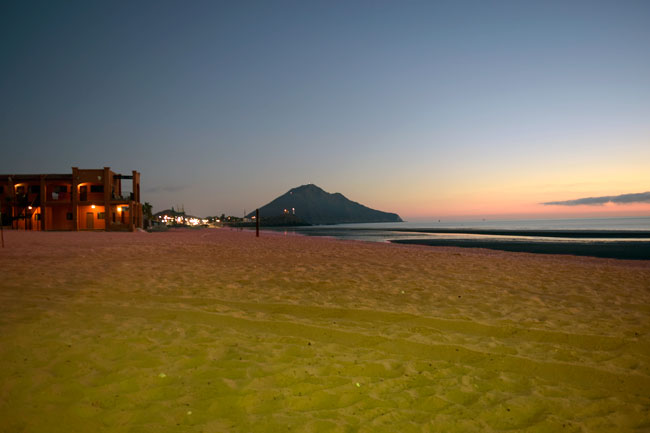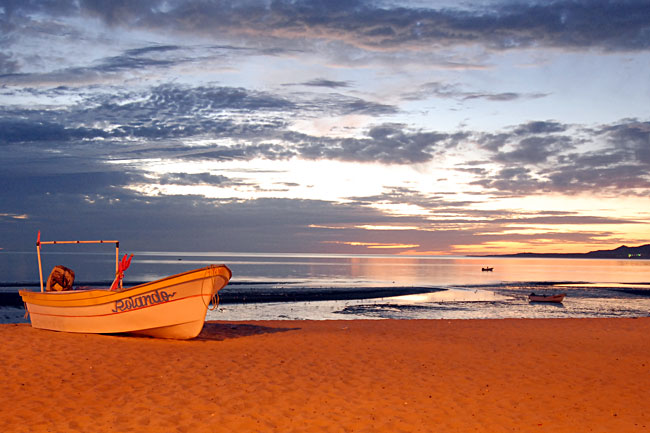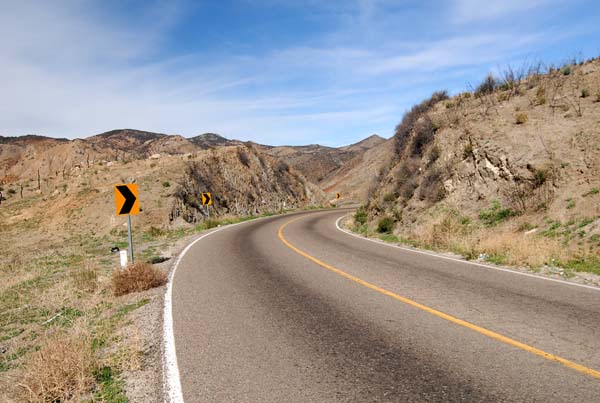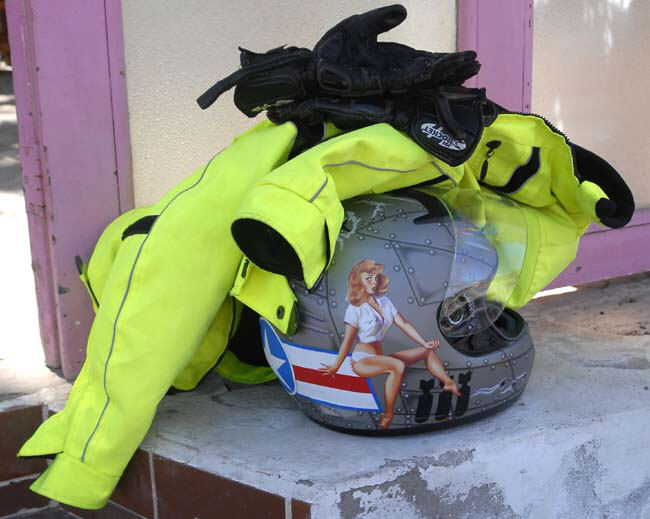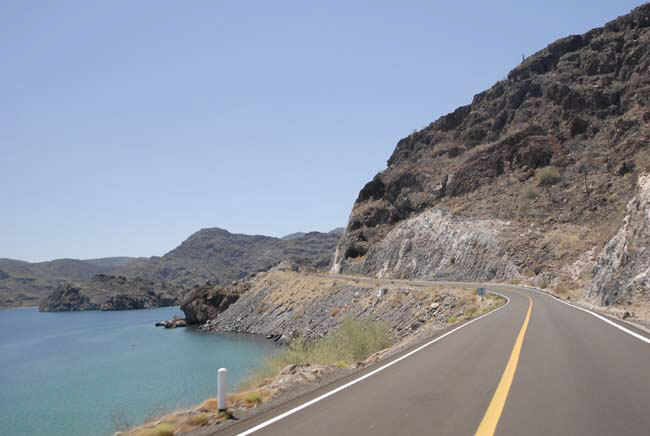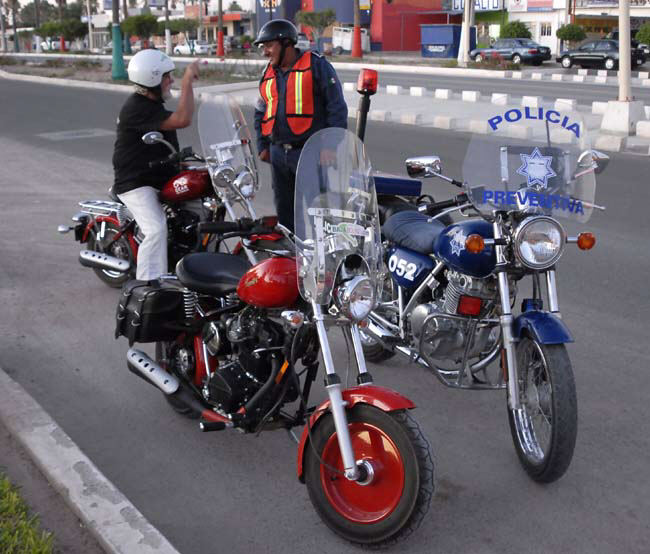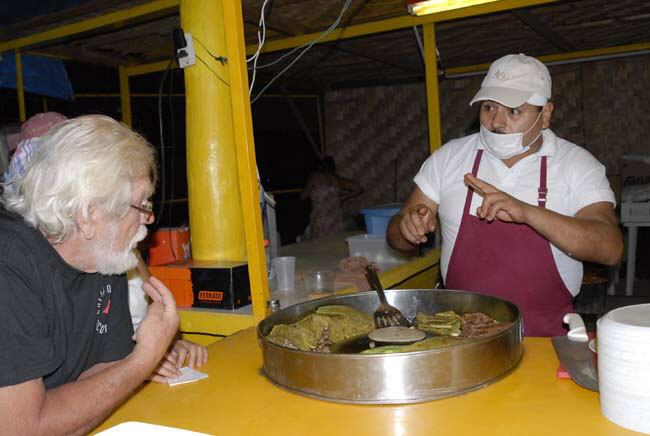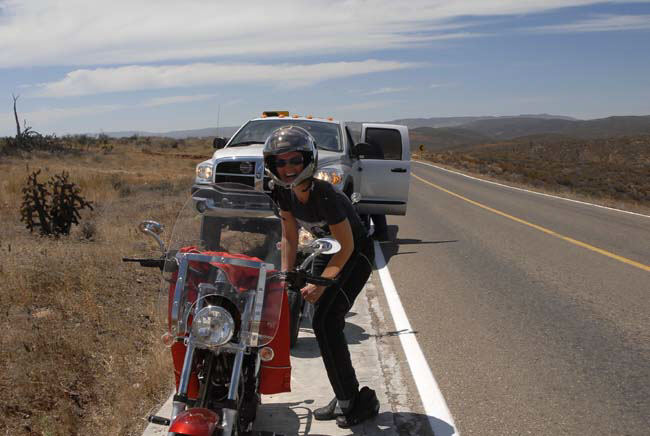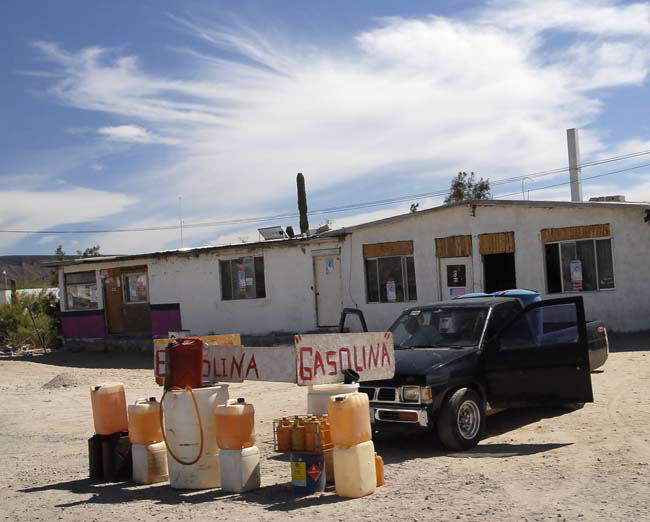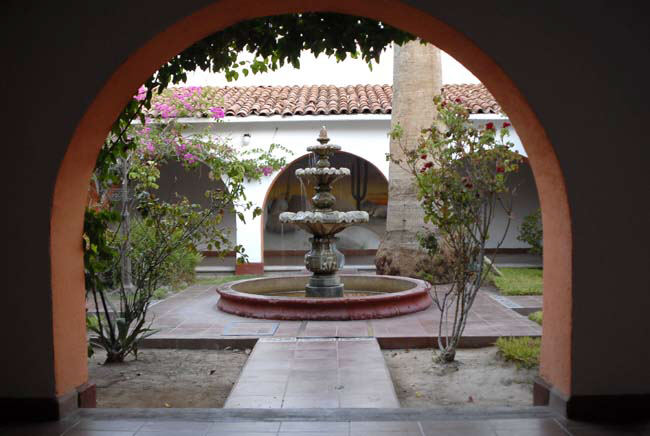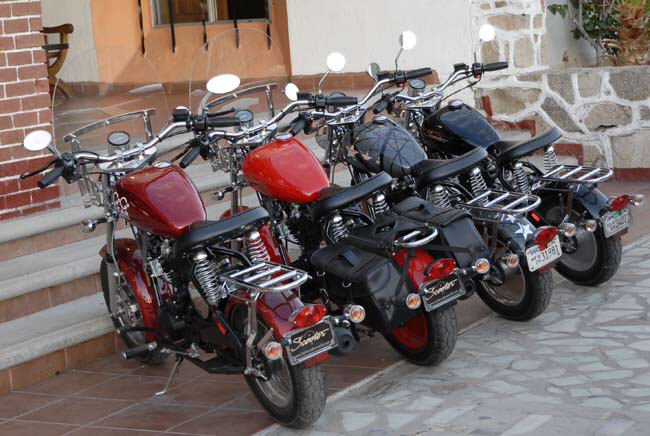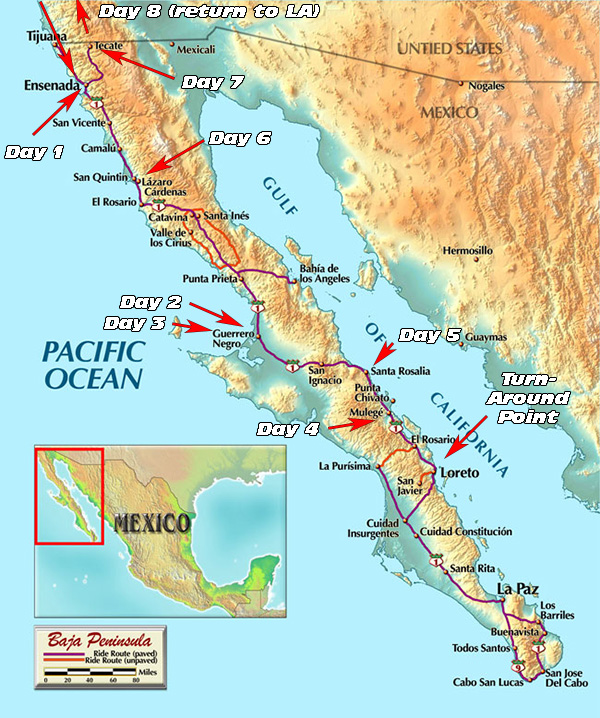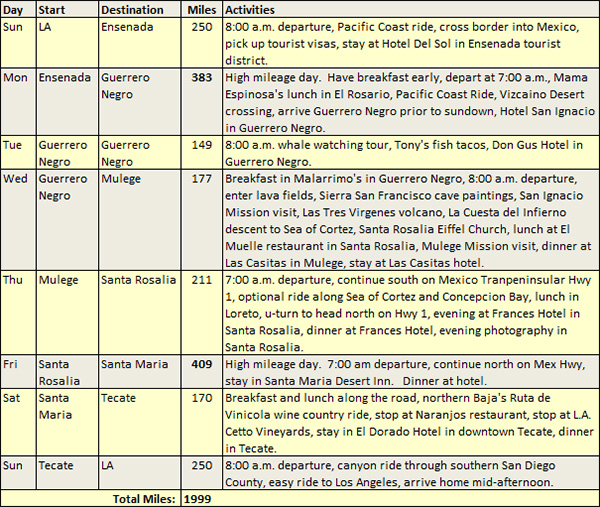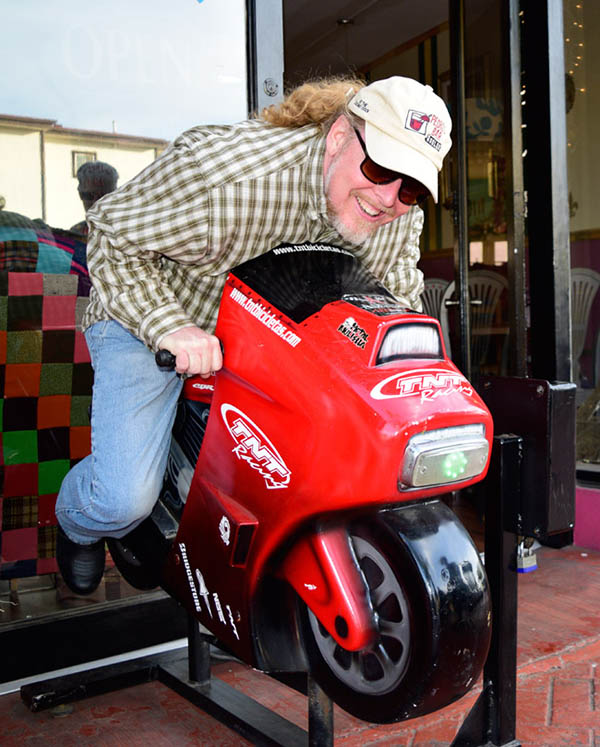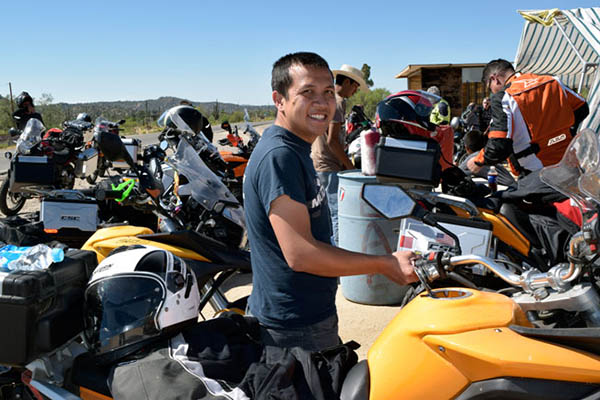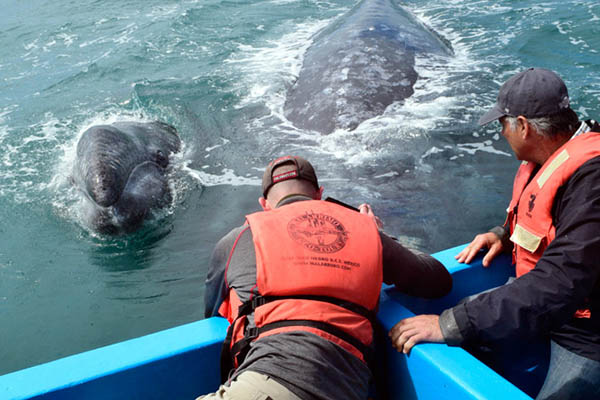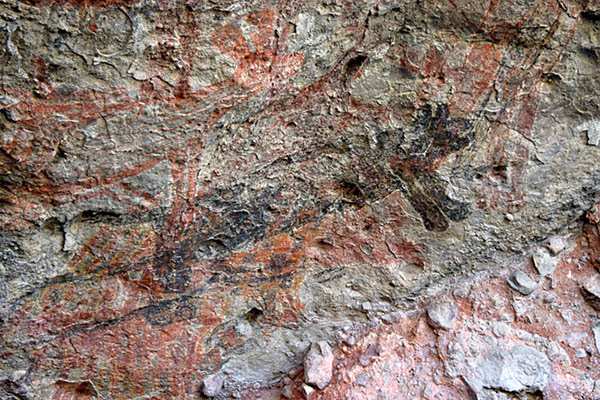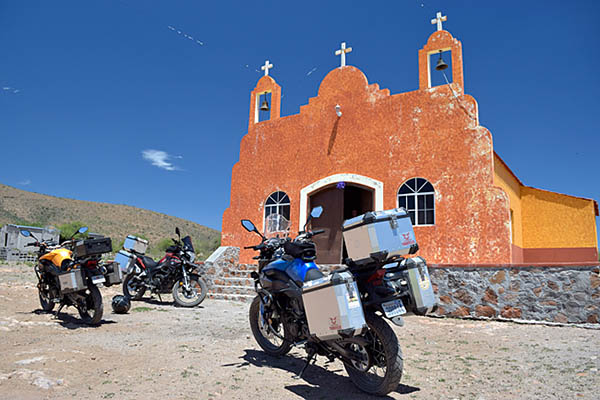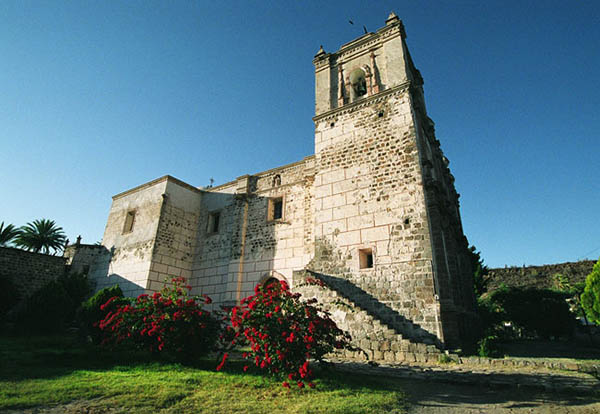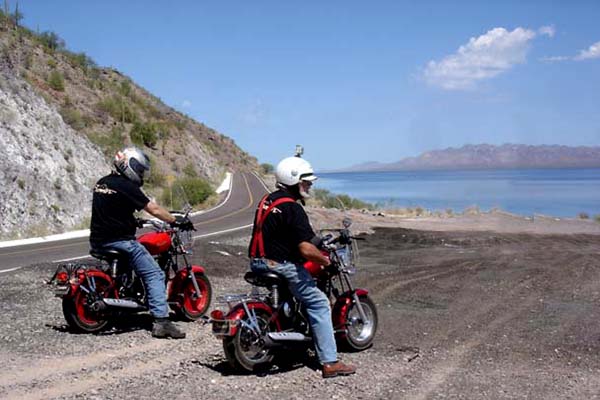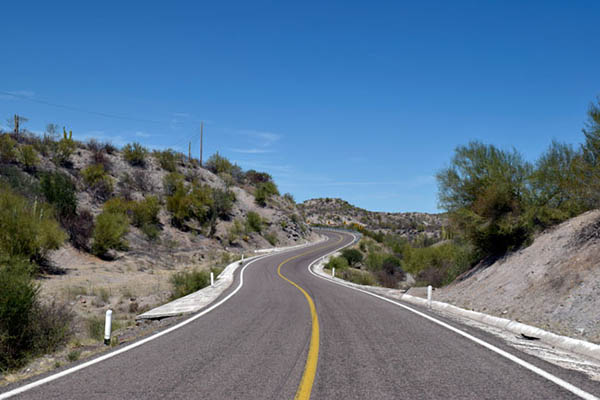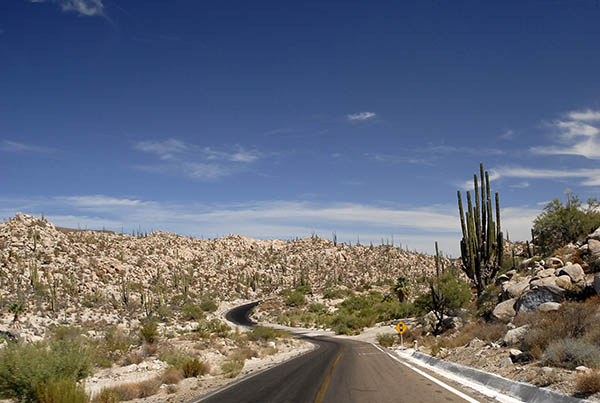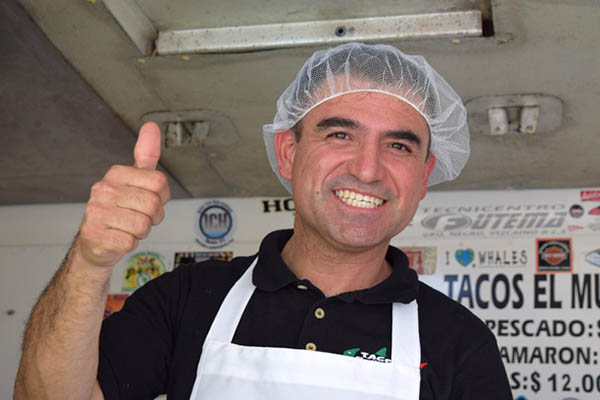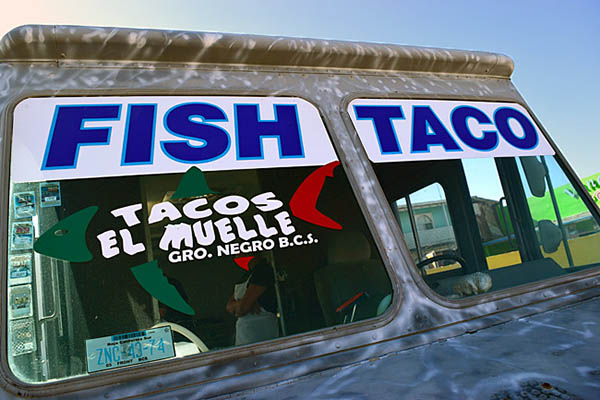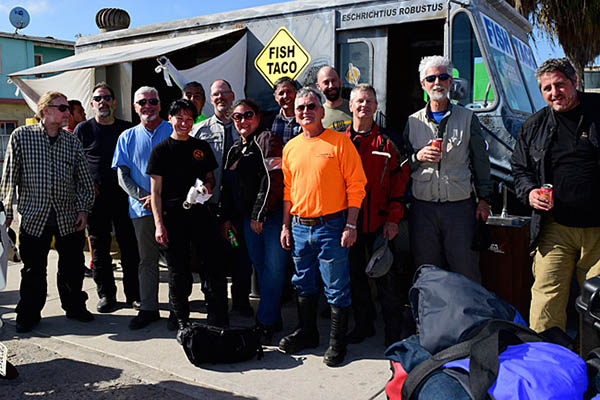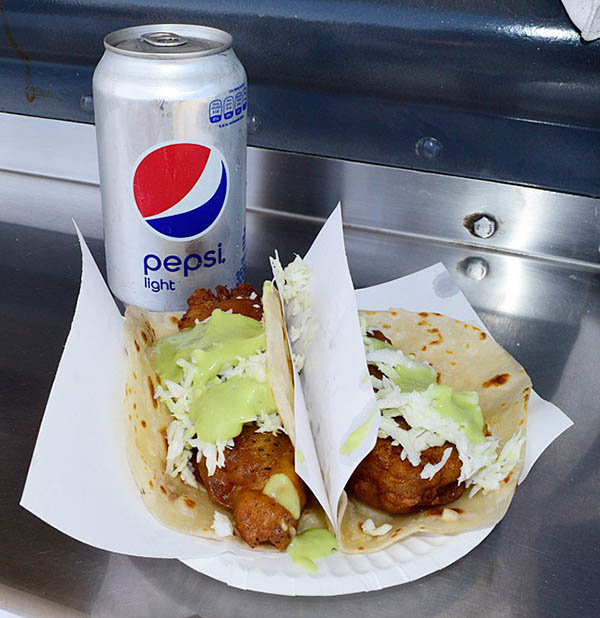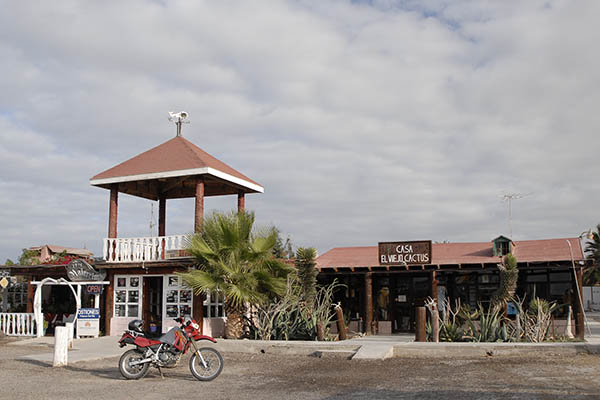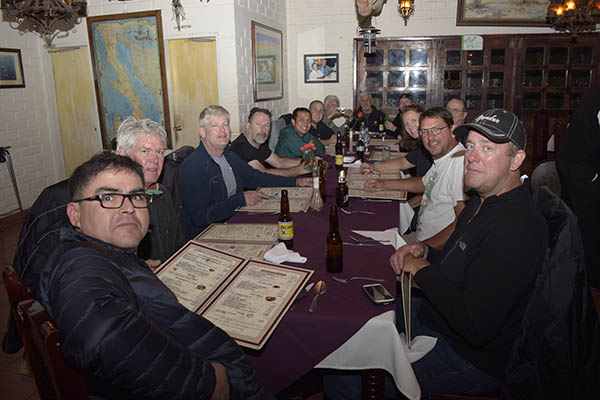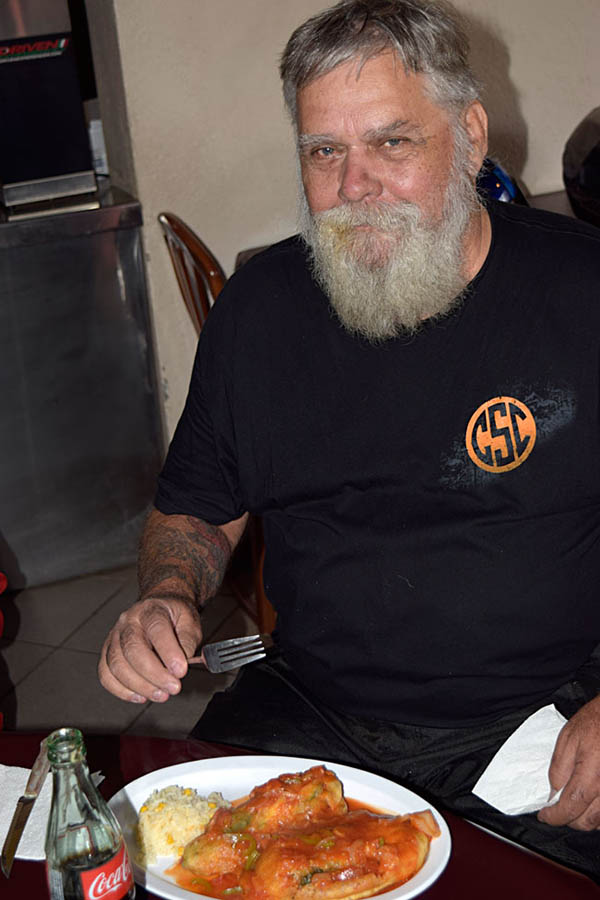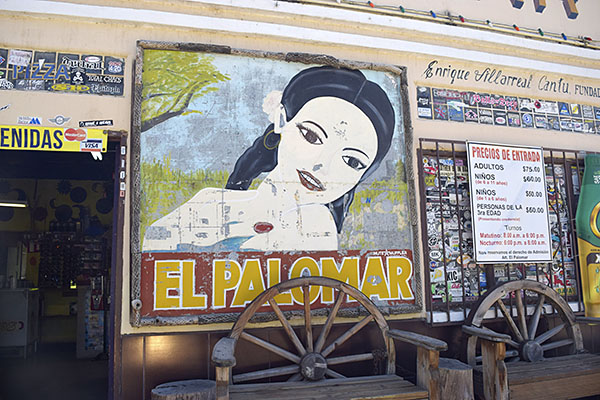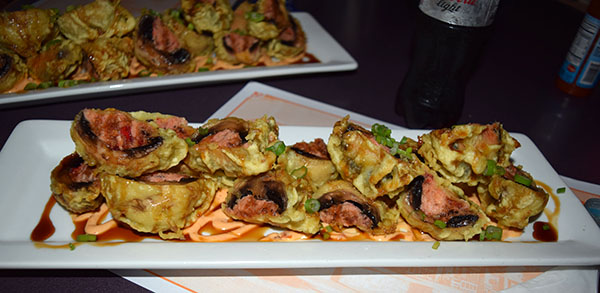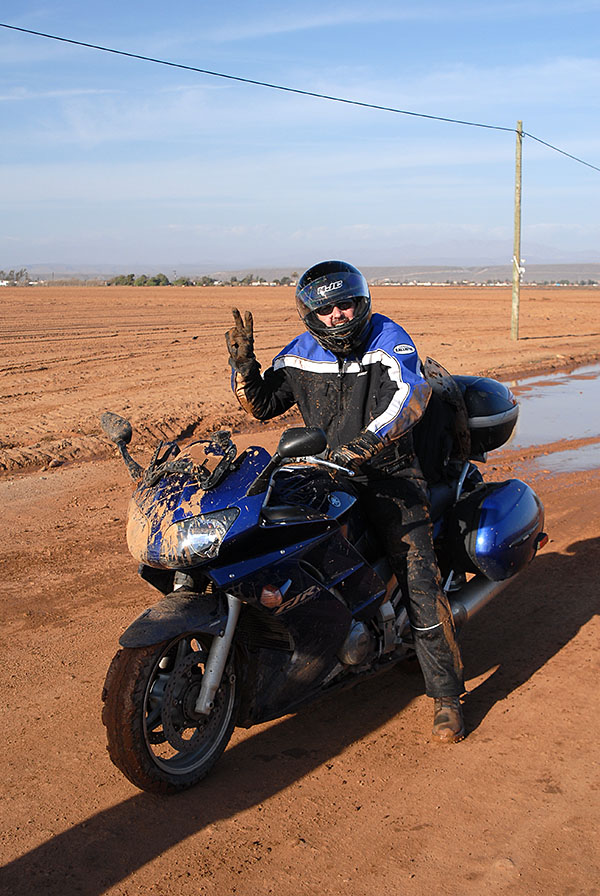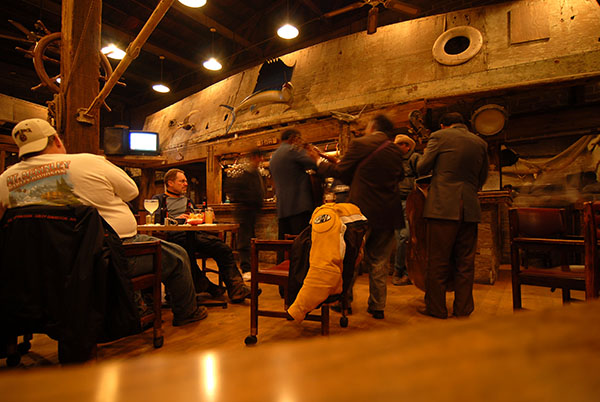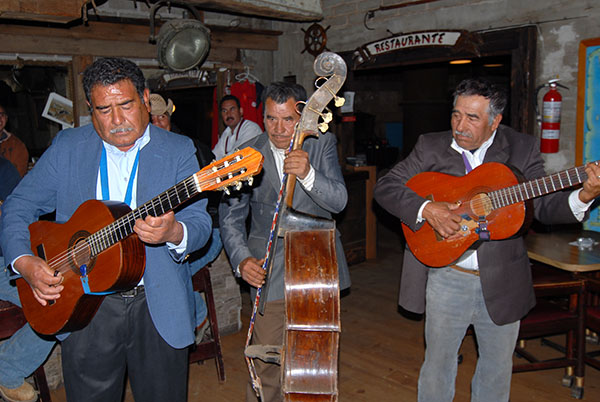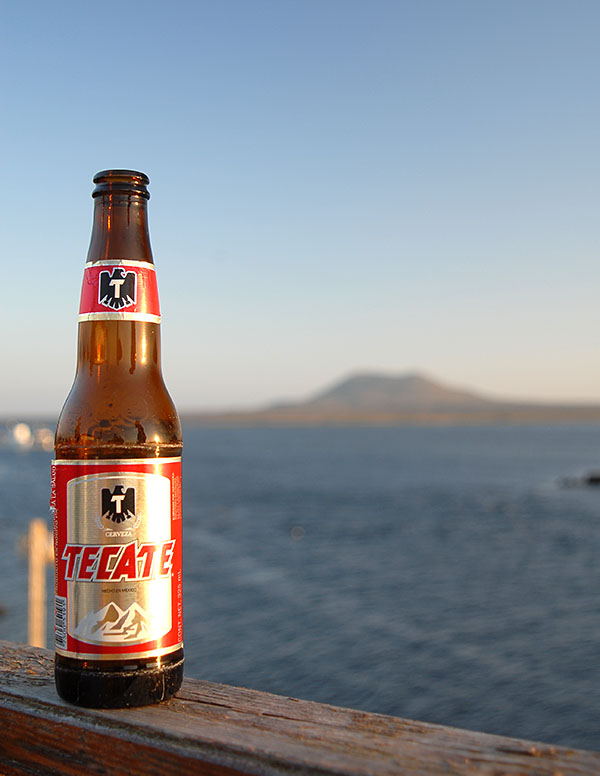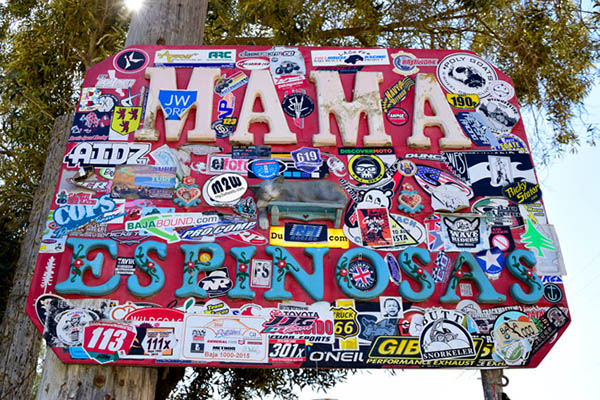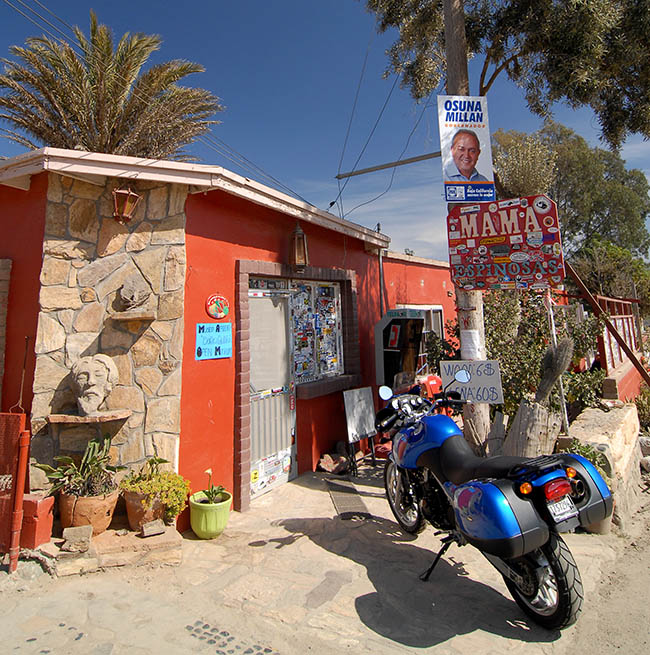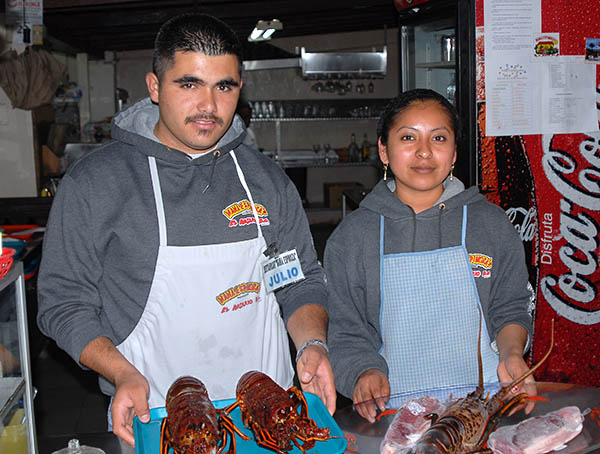I’m back after a 4-day, thousand-mile ride through Baja on a Janus Gryffin. I’m well-rested, I’m warm, and I had a great time. It was a ride I’ll remember.
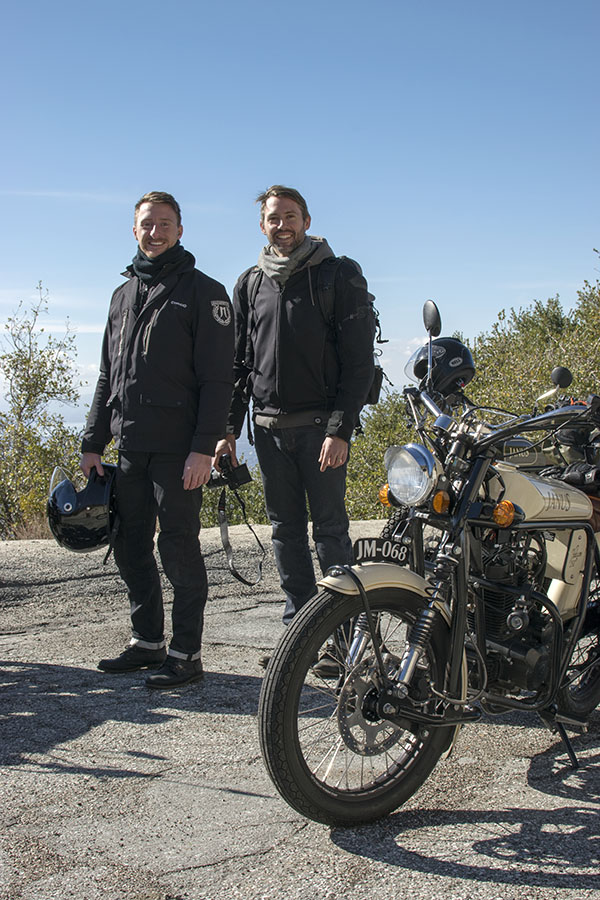
On our first day we rode up to Idyllwild on icy roads, on to Julian, and then to the border near Tecate. Wow, was it ever cold! On every motorcycle trip, there are those “Why I am doing this?” moments, and I had more than a few of those on that first day. We stayed in Pine Valley on the US side that first night, a wide spot in the road with one restaurant open that evening, the appropriately-named Frosty Burger with outdoor seating only. Nope, too cold for that. It was to be a general store with sandwiches and pizza that night, which we ate standing in the store (the place had no seating). We joked with the two ladies behind the counter. “I’m married, ladies,” I told them, “but my friends Jordan and Devin want to know if you’re single.” It was that kind of an evening. We were out in the world on a motorcycle ride, headed for Mexico.
We crossed the border the next morning and the Mexican immigration officer successfully pitched his homemade salsa to us. It was funny. I tried to imagine a US Customs officer examining my passport in LAX and asking “hey, have you ever considered becoming an Amway rep?”
The bikes drew a crowd of Mexicans at the immigration control point, and that occurred every place we went. Even folks with no motorcycle knowledge knew they were looking at something special. Those who knew bikes understood these machines even better. A Mexican gentleman about my age examined the leading link front suspension and said “Ah, like Montesa.” His knowledge of vintage Spanish motorcycles surprised me and I immediately thought of Joe Gresh (it’s a private joke, folks).
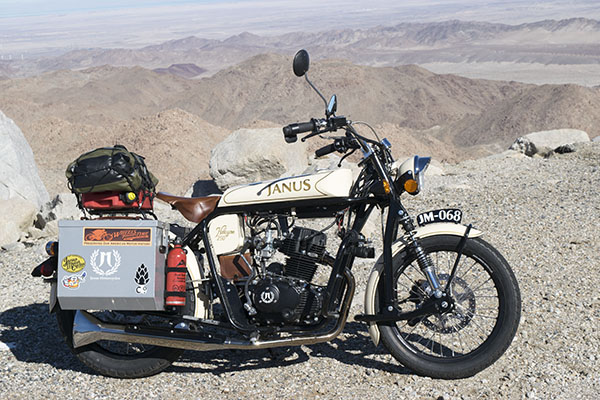
That day we stopped for photos as we rode through the Rumarosa Grade, and then it was on to the Mexicali bypass. We picked up Highway 5 south, and it was on that stretch that I really bonded with the Gryffin. I can only do that on a motorcycle with a soul. Some motorcycles have no soul and no character. But the Janus did. My good buddy Marty once bought a new Honda CBR1100XX, a bike with incredible performance stats. But he sold it after only a few months, and when I asked why, Marty told me it had no character and no soul. I realized as I rolled through Mexico at a steady 50 mph that the Gryffin was something special. It spoke to me. The burble of its CG engine had a good sound. The cold air felt less cold, and the bike just felt right. It’s not something that’s easy to explain. Some of you will know what I’m talking about.
I knew a taco stand I wanted to visit for lunch, but we were already out in the desert coastal plains north of the Sea of Cortez and I had not seen it. Maybe it closed since I was here last, I thought, or maybe I just missed it. That would be disappointing. Then, nope, there it was. It was to be our first meal in Mexico. I was hoping Devin and Jordan would like it. Some folks get Baja, and others don’t. I would soon know if these guys would understand Baja’s magic.
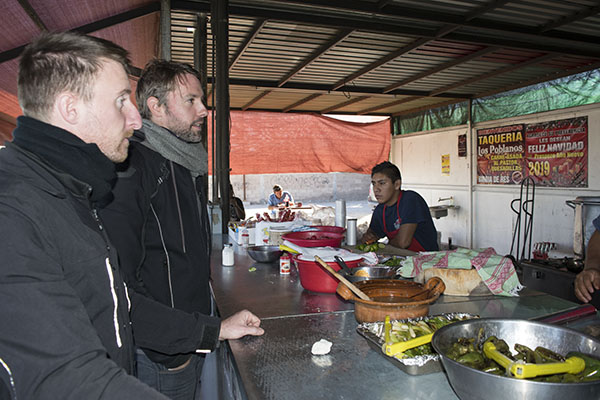
Jordan ordered tacos. I ordered a quesadilla, and Devin did, too. We sat at one of the tables in front of the counter, all outdoors, and I looked at Jordan. He was chomping down on a taco bathed in guacamole sauce. He nodded approvingly, savoring the best of Baja. My quesadilla was delicious. Devin took a bite of his and smiled. At that instant, I knew this was a great trip, one for the ages. These guys get it, I realized. Devin, who had said something about being a vegan at the start of our trip, abandoned all thoughts of vegan purity. Hey, it’s the 500-mile rule. We were outside the perimeter of all mortal regulatory constraints and anything went. Devin wondered aloud if he had time to order a second quesadilla. He looked at me. You bet, I said. Go for it. More Mexicans stopped to admire and ask us about the motorcycles parked at the edge of our table. It was fun.
We burbled further south on Highway 5. The bikes purred. There’s just something about a single that says all is well with the world. And all was that fine day.
Dinner in along the Malecon in San Felipe that evening was fun. It had grown cold again, but it was not the bitter cold of Pine Valley. We looked out into the dark over the Sea of Cortez, knowing we had been carried to this spot by our Janus motorcycles. We had Tecate cerveza, con sal, with a wedge of lime. Devin ordered a bowl of guacamole. Chips and salsa were before us. They say you truly know the limits of your self-control when the chips and salsa are in front of you. I had none (self-control, that is). It was a wonderful dinner.
“So how does it feel,” I asked Devin, “knowing that you’re riding a motorcycle you designed and built, being in a place like this?”
Devin smiled. “It feels good,” he answered. He ordered another Tecate, one of the life’s grand treats, bottled in a city we had ridden through just that morning.
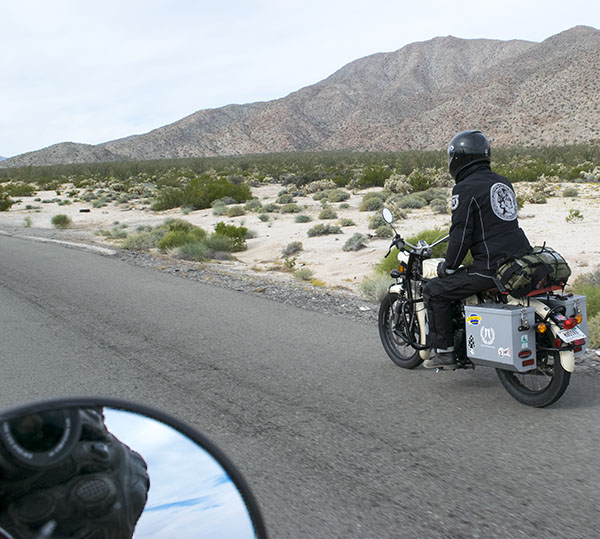
We were up early the next day, and we were on our way diagonally across Baja to Ensenada. We owned the road; there were almost no other vehicles on Highway 3 that morning. The photo ops were great. The scenery was impressive. We stopped for fuel at a Pemex in Valle Trinidad. It was grand, as riding a motorcycle in Baja always is. We rolled on for 70 miles and entered Ensenada from the southeast. It was a heavily-littered area and the traffic soon grew heavy. We caught glimpses of the Pacific Ocean. We passed an intersecting road that entered Highway 3 at an angle at least 45 degrees steep. I wondered how any vehicle could make it up such a grade, stop, and then enter our roadway. Ah, Mexico. I love it.
We rolled into Tecate late that third night. The Janus motorcycle’s headlight is impressive; it did a much better job than I expected. The El Dorado hotel had no vacancies, so it was on to the Hacienda (a mile further up Benito Juarez Boulevard), and we were in luck. Dinner that night was Chinese food. Yep, Chinese food in Mexico. Chinese restaurants abound in Mexico, and they are excellent.
We were concerned about the next day, as the forecast was for rain. Up early again, we turned in our tourist visas at the Mexican immigration office (no pitches for salsa this time), and we cut through the K-barriers to jump the line to the US border crossing. That little trick took at least an hour off our trip, and nobody tear-gassed us for rushing the border. The US border control officer was intrigued by my motorcycle. I told him about Janus and mentioned that the founder was on the next bike. I think he found that even more intriguing.
Our ride home yesterday began with the mountains and twisties of southern San Diego County, and then we entered San Diego’s morning rush-hour traffic. It was the 94 to the 805 to the 15, and then a 120-mile drone north. Rain hit us just south of Temecula. We rode through 30 miles of it, we stopped to top off the bikes in Elsinore (yep, a Honda was named for the very same city), and a few miles further down the road the rain stopped.
That was our ride. Like I said above, I loved it. Even the cold parts and the rain. Those are the parts of any motorcycle trip I always remember. Time washes away the fleeting discomfort and it all blends together as part of the adventure.
So, on to the Janus motorcycles themselves. What are they like?
In a word, they are unique. They are vintage, but new. They target a special kind of rider. They are not for everybody and not everybody will understand what they are. But those who do….well, read on, my friends.
I’ve read comments about Janus on the forums saying they’re too expensive, they’re Chinese, Janus won’t last, you won’t be able to get parts, they’re overpriced, and on and it goes. There’s a behavioral science term for this kind of Internet forum negativity and nastiness: Online disinhibition. It means that folks say stupid stuff on the Internet they would never say in person. Couple that with the fact that a motorcycle is an emotional purchase, and you see some really wild stuff out there. Anyone with a keyboard and a connection thinks they are an expert on motorcycle design, manufacturing, procurement, service, and of course, marketing. My take on all of this? If ignorance truly is bliss, there are lots of really happy people out there.
As I said above, somewhere on the road to San Felipe I bonded with the Gryffin. It just felt right to me. The motorcycle had a gem-like quality, with the precise and exquisite feel of a Rolex wristwatch. The fuel tank is a work of art. The leading link front suspension has a hint of R69S to it; the bike doesn’t dive on braking (a benefit of this kind of suspension). The colors just flat work and they are elegant. The seat looks right (Devin apologized about the comfort level and he told me they have a new seat coming, but it felt okay to me as is). The frame is a deep gloss black. The rear rack works and it looks good. The switchgear was slightly different than what I am used to, but I became comfortable with the Janus layout quickly. The fit and finish are superior.
I know the CG engine well, having ridden many long-distance trips on CG-engined CSC motorcycles. It’s no secret that I’m a big fan of the CG engine, and the Janus bikes showcase the engine well. I know where the engine is made (China) and I know where the design originated (Brazil and Japan), but this vertical single has a distinctly British look. In fact, even though the Janus and nearly all of its parts are fabricated and assembled in Goshen, Indiana, the bike looks British to me. Not British as in Triumph’s Kawi-inspired multis or today’s Thai-built Bonnevilles, but British of the Cotton 650 single, the BSA M20, or Brough Superior days (and I realize as I type this that the naysaying keyboard commandos will have no idea what I am talking about). I like that early British look, and I think the Janus guys nailed it. Maybe that’s why I bonded with the bike. Cue in the theme music from any James Bond movie, with Sean Connery’s voiceover: Bond. Janus Bond.
I like that you can see the motor. It’s a motorcycle, see? You’re supposed to be able to see the motor on a motorcycle. You can see the engine on this bike. It’s the way God intended a motorcycle to be. Body work? Fairings? We don’t need no stinking fairings!
Here’s something else I like: The Janus folks don’t like chrome. That doesn’t mean the bikes have no shiny components (they have many), but when you see something on a Janus that’s shiny, it’s not chrome. In nearly all instances, it’s polished stainless steel. Made in Goshen, Indiana. That’s right here in the US, you know. Tell me again why you think $7000 is too much for this hand-built motorcycle?
About 25% of our trip involved riding in the mountains and that meant tons of twisties. The bike handles well, even with the weight I had strapped on the rear rack. Devin told me that I went through a corner with the motorcycle leaned over way more than he had ever seen. I told him I wanted to assess how the bike took a corner hard; I didn’t tell him I hadn’t been paying attention and I entered that corner way too hot. Trust me on this: The bike handles.
The Janus motorcycles excel in drawing a crowd, far more so than any other motorcycle I’ve ever ridden. The things are magnets. People know they are seeing something special, and once they get close enough, the Janus attention to fit and finish makes the motorcycles even more visually appealing. The closest thing I’ve ever seen to a bike attracting this kind of attention were the CSC Mustangs, and the Janus was even more of a magnet. Many folks thought the Janus motorcycles were restored vintage machines. We experienced this kind of attention at virtually every stop.
Look, I know you can buy a used (fill in the blanks here, keyboard commandos) for less than the cost of a new Janus. That’s missing the point entirely. I’m fairly confident that no one ever considered a used Sportster as an alternative to a Janus. Nope, this bike is for someone who wants something special, something different, something that is not made to appeal to the broadest possible market. I asked Devin if he and Richard Worsham (Janus’ other founding partner) did a market study before they introduced the bike. You can guess the answer. “No,” Devin answered. “We built the bike we wanted to build.” So, if you’re a person who follows the crowd, this is not your motorcycle. If you’re a person who makes your own decisions, though, then you’re in the zone here, folks.
About that $7K price: The keyboard commandos have said that’s too much for a 250. I don’t think so. Consider the BMW G 310 GS recently reviewed here on the ExNotes blog. That’s a 250-class bike made in India that goes for something north of $7K. Consider the Versys 300 Kawi. Same story there by the time you’re done screwing around with the typical dealer’s larcenous setup and freight charges. Yeah, there are other machines out there for less, most notably the CSC motorcycles with the same CG engine (the TT250 and the SG250). The CSC motorcycles are phenomenal motorcycles and their value is off the charts. They don’t have the look and the exclusivity of a Janus, though, and they are not made in America. Is that important? I’d say no, but a lot of people think otherwise to read their Internet forum comments (which they type, of course, on computers made in China).
Think about that for a second. Motorcycles made in America. Yeah, the Janus CG motor is Chinese. What’s your point? Nearly everything else is fabricated and assembled right here. Maybe it’s time for some of the naysayers and keyboard commandos to put their money where their mouths are. It’s not likely the strokesters would ever do that, but maybe it’s time they should. Me? I think what the guys in Goshen are doing is amazing. You have two young guys with a vision and a great team building motorcycles in America. Exquisite motorcycles with style and a unique character. Motorcycles that can take you through Baja and bring you back safely. Motorcycles with a soul. A motorcycle with which you can form a bond. What’s wrong with that?
Want to read the rest of the story? Please visit our Baja page for an index to all of the Janus Baja blog posts!

